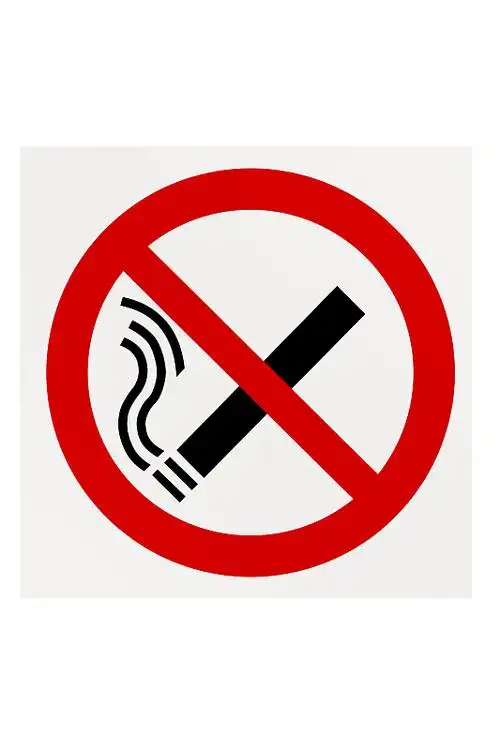The Unseen Link: How Tobacco Use Prolongs the Agony of Chronic Prostatitis
If you're living with chronic prostatitis, also known as Chronic Pelvic Pain Syndrome (CPPS), you know the relentless nature of this condition. The dull ache in your lower abdomen, the urgent and frequent trips to the bathroom, and the general feeling of discomfort can dominate your life. You've likely tried various treatments, from antibiotics to physical therapy, searching for that elusive relief. But what if one of the most significant factors prolonging your suffering is a habit you engage in daily? A growing body of evidence points to a clear and concerning connection: tobacco use actively prolongs the duration of chronic prostatitis symptoms, trapping men in a cycle of inflammation and pain.
To understand this link, we must first look at what chronic prostatitis truly is. Unlike the acute form, which is often caused by a bacterial infection and clears up with antibiotics, chronic prostatitis is a complex, long-term condition. Its hallmark is persistent inflammation in the prostate gland and the surrounding pelvic tissues. This inflammation is the engine that drives the pain, urinary issues, and overall decline in quality of life. Managing chronic prostatitis, therefore, becomes a battle against this persistent inflammatory state. And this is precisely where smoking and tobacco use enter the picture as a major antagonist.
The Inflammatory Firestorm: Tobacco's Direct Assault

Every puff of a cigarette introduces a cocktail of over 7,000 chemicals into your body, many of which are potent pro-inflammatory agents. Nicotine, tar, carbon monoxide, and heavy metals like cadmium travel through your bloodstream, affecting every organ, including the delicate prostate gland.
Tobacco smoke directly irritates the nervous and immune systems. It promotes the release of cytokines—small proteins that act as signaling molecules for inflammation. Think of them as alarm bells that tell your body to send inflammatory cells to a specific area. In the case of a chronic prostatitis patient, the pelvic region is already on high alert. Tobacco smoke cranks this alarm system up to maximum volume, leading to a heightened and sustained inflammatory response within the prostate. This means the very symptoms you're trying to quell—the swelling, the pain, the discomfort—are being continuously fueled by the toxins in tobacco. This is a primary mechanism for how smoking worsens prostatitis pain and contributes to long-term prostatitis discomfort from smoking.
Furthermore, tobacco use severely compromises blood circulation. Nicotine is a powerful vasoconstrictor, meaning it causes your blood vessels to narrow. This reduces the flow of oxygen-rich blood to all your tissues. For the prostate, a gland that requires good blood flow for healing and maintenance, this is devastating. Poor circulation, or ischemia, means the prostate is starved of essential nutrients and oxygen while being unable to effectively flush out metabolic waste and inflammatory byproducts. This creates a toxic environment where inflammation thrives and healing is stalled, directly leading to prolonged prostatitis symptoms from tobacco.
The Neurological and Muscular Double Whammy
Chronic prostatitis is not just about the prostate itself; it's deeply connected to the nerves and muscles of the pelvic floor. Many men with CPPS experience pelvic floor muscle tension and spasms, which contribute significantly to pain and urinary dysfunction. Tobacco use exacerbates this problem in two key ways.
First, nicotine is a stimulant. It can increase overall muscle tension and anxiety levels. For pelvic muscles that are already chronically tight and hypertonic, this added stimulation can trigger more intense and frequent spasms, amplifying pain. Second, the toxins in tobacco can damage the peripheral nerves. This can lead to a condition called neurogenic inflammation, where the nerves themselves become oversensitive and perpetuate pain signals even without a ongoing tissue injury. This creates a vicious cycle where tobacco-induced chronic pelvic pain becomes a self-sustaining problem, independent of the initial prostate inflammation. Quitting smoking becomes a crucial part of breaking this link between smoking and chronic prostatitis duration.
Beyond the Prostate: The Systemic Damage
The impact of tobacco extends far beyond local inflammation. Smoking is a leading cause of a systemic condition known as oxidative stress. This is an imbalance between harmful molecules called free radicals and the body's antioxidants. Free radicals damage cells, proteins, and DNA, accelerating aging and disease processes. A body grappling with the oxidative stress from smoking has fewer resources to fight the localized oxidative stress occurring within an inflamed prostate. This systemic burden makes it exponentially harder for your body to calm down the prostatic inflammation, thereby extending prostatitis flare-ups with cigarettes.
Moreover, smoking dramatically weakens the immune system. The cilia—tiny hair-like structures in your airways that help clear pathogens—are paralyzed by tobacco smoke. This makes you more susceptible to all kinds of infections. While chronic prostatitis is often non-bacterial, a compromised immune system can make you vulnerable to secondary infections that can trigger or worsen a prostatitis flare-up. Your body's ability to regulate its immune response and keep inflammation in check is severely handicapped, making managing prostatitis with tobacco use an uphill, and often losing, battle.
The Path to Relief: Why Quitting is a Powerful Treatment
Understanding this destructive relationship is the first step. The next, and most crucial, step is to act. Quitting tobacco is not just a general health recommendation; for men with chronic prostatitis, it should be considered a core component of their treatment plan. It is a powerful, non-pharmacological intervention that targets the root causes of prolonged symptoms.
The benefits of quitting begin almost immediately. Within weeks, your circulation begins to improve, delivering much-needed oxygen to the prostate and pelvic tissues. Inflammation markers in the blood start to drop. As your nervous system recovers from the constant stimulation of nicotine, overall muscle tension, including in the pelvic floor, can begin to ease. This can lead to a noticeable reduction in pain and urinary urgency. While chronic prostatitis is a complex condition that may require a multi-faceted approach, eliminating tobacco removes a major driver of inflammation and pain, making other treatments like medication, physical therapy, and stress management far more effective. This is the key to reducing prostatitis inflammation after quitting tobacco.
Quitting is challenging, but you don't have to do it alone. Seek support from healthcare professionals. Consider:
- Your Urologist: Discuss your intention to quit. They can provide resources and may prescribe medications like nicotine replacement therapy (gum, patches, lozenges) or non-nicotine prescriptions such as bupropion or varenicline.
- Smoking Cessation Programs: These structured programs offer counseling and group support, which significantly increase long-term success rates.
- Digital Tools: Mobile apps can provide daily motivation, track your progress, and offer tips for managing cravings.
Remember, every cigarette you don't smoke is a step towards calming the inflammatory storm in your pelvis. It's a decision to stop actively prolonging your pain and to start giving your body a genuine chance to heal. The journey to alleviating chronic prostatitis by stopping smoking is one of the most direct and impactful actions you can take to reclaim your comfort and your life from this persistent condition. Your future self, free from the added burden of tobacco, will thank you for the courage you show today.












